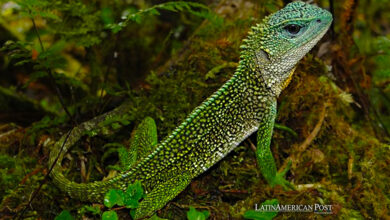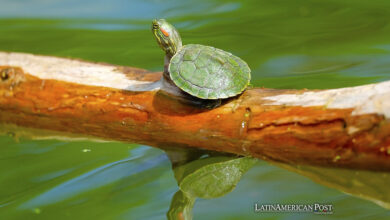Mexico’s Conservation Crusade for Axolotls
In a bid to rescue the iconic axolotls from the brink of extinction, ecologists from Mexico's National Autonomous University have reignited their fundraising campaign known as "Adoptaxolotl." This extraordinary initiative calls upon individuals to virtually adopt these remarkable creatures, whose survival is hanging by a thread in their native habitat.

Photo: Pixabay
The Latin American Post Staff
Escucha este artículo
Leer en español: La cruzada de conservación de los ajolotes en México
Campaign to Save the Axolotl
The "Adoptaxolotl" campaign appeals to people from all walks of life, asking for contributions as small as 600 pesos, roughly equivalent to $35, to virtually adopt one of these captivating "water monsters." In return, supporters receive live updates on the well-being of their adopted axolotl. Alternatively, donors can choose to provide a virtual dinner for one of these aquatic wonders.
However, the urgency of this conservation effort becomes painfully clear when considering the staggering statistics. In the axolotls' primary habitat, the population density of Mexican axolotls, scientifically known as "ah-ho-LOH'-tulz," has plummeted by a catastrophic 99.5% in less than two decades. This alarming decline underscores the critical need for immediate action.
Last year's "Adoptaxolotl" campaign managed to raise just over 450,000 pesos, equivalent to $26,300. These funds were channeled toward an experimental captive breeding program and initiatives aimed at restoring the fragile ecosystem in the ancient Aztec canals of Xochimilco, located in the southern borough of Mexico City.
Challenges and Lack of Resources
Nonetheless, despite these commendable efforts, there is a glaring shortage of resources for comprehensive research. Alejandro Calzada, an ecologist leading a team of nine researchers who study lesser-known axolotl species for the government's environment department, laments the lack of significant monitoring across Mexico City, let alone the entire country.
Intriguingly, despite the recent surge in popularity, nearly all 18 species of axolotls in Mexico remain critically endangered. They face threats such as encroaching water pollution, a deadly amphibian fungus, and the presence of non-native rainbow trout in their habitat.
Scientists who once used to find an average of 6,000 axolotls per square kilometer in Mexico now encounter a mere 36. An international study conducted more recently has painted an even bleaker picture, revealing that there are fewer than a thousand Mexican axolotls left in the wild.
Urgent Call for Action
Luis Zambrano González, a scientist at the National Autonomous University spearheading the fundraiser, expressed his determination to initiate a new census, the first since 2014, in March. He voiced his concern, stating, "There is no more time for Xochimilco. The invasion of pollution is very strong—soccer fields, and floating dens. It is very sad."
Without comprehensive data on the number and distribution of different axolotl species in Mexico, it remains challenging to estimate the time these creatures have left and where to allocate the limited available resources effectively.
Alejandro Calzada emphasizes the urgency of the situation, declaring, "What I know is that we have to work urgently."
Axolotls as Cultural Icons
Axolotls have become a cultural icon in Mexico, celebrated for their unique, albeit somewhat slimy, appearance and their astonishing ability to regrow lost limbs. In laboratories worldwide, scientists believe that this regenerative power might hold the key to advancements in tissue repair and even cancer recovery.
Traditionally, government conservation programs have concentrated on the Mexican axolotl, primarily found in Xochimilco. However, various axolotl species inhabit different regions of the country, from tiny streams in the valley of Mexico to the arid landscapes of the northern Sonora desert.
The rapid urbanization of Mexico City has adversely affected the water quality of the canals, while the presence of rainbow trout escaping from fish farms in nearby lakes poses a threat to axolotls by displacing them and consuming their food.
Calzada's team has also encountered an increasing number of axolotls succumbing to chytrid fungus, a devastating skin-eating disease responsible for amphibian die-offs spanning from Europe to Australia.
Also read: Mexico's Women in Crisis Behind Bars: Rising Suicides Spotlight Systemic Fail
Funding Challenges and Government Cuts
Compounding the challenges, academics heavily rely on donations, and Calzada's team often relies on a dedicated corps of volunteers. In a discouraging development, the Mexican government recently approved an 11% funding cut for its environment department. Over the course of President Andrés Manuel López Obrador's six-year term, the department will have received 35% less funding than its predecessor, as revealed by an analysis of Mexico's 2024 budget.
The future of these remarkable creatures hangs in the balance, and as the "Adoptaxolotl" campaign gains momentum once again, the world watches, hoping that collective efforts can secure the survival of the axolotls and preserve their unique place in Mexico's natural heritage.


